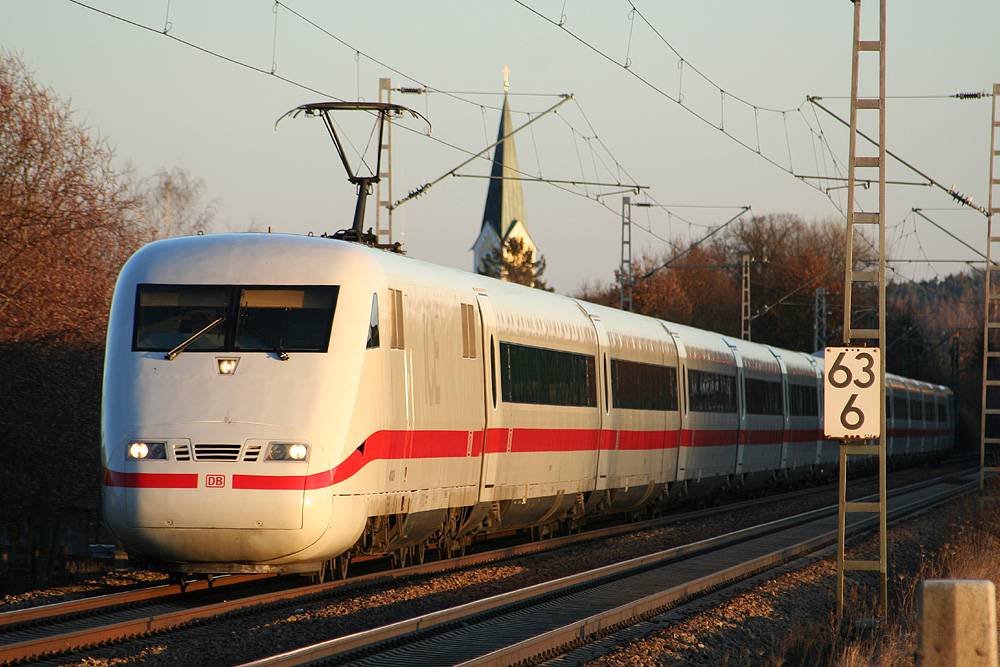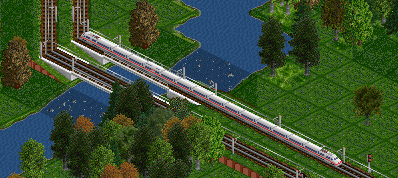Description
The ICE trainset was developed in parallel to the creation of the high-speed track Hanover-Würzburg. On this line, the new trains should run at more than 250 kph, which required totally new vehicles. The first units were put into service in 1990, at the same time as the tracks were opened for regular service. The ICE-network then grew very fast due to numerous new and improved lines.
Nowadays the trains with the distinctive livery of white with red stripe (though often enough the front is more dirty gray and screams for a cleaning...) are the undisputed flagship of Deutsche Bahn. The trains run on several lines all across Germany, mainly in North-South direction between Hamburg and Munich or Basel. Between 2005 and 2008 huge updates were done, thinking the trains might be fit for another 15 years of service. By 2019 further modernizations were started, as the trains still cannot be retired. However, with the ICE 4 being in service by now, a successor is available.
The introduction of this type starts a whole new chapter of passenger transportation, introducing high-speed services on special tracks. The high-speed tracks should be built without curves and slopes as far as possible to allow the trains to run at the highest speeds. Of course the prefered services are long-distance passenger runs from one end of the map to the other.
Images and Screenshots

(© Sebastian Terfloth / CC-BY-SA-2.0 via Wikimedia Commons)
The ICE 1, a modern classic

An ICE on a high speed track. Well, the most relevant high speed thing here is the bridge which allows travelling at maximum speed.
Technical Data
| Name | BR 401 (ICE 1) |
|---|---|
| Built | 1990- |
| Power | 9248 hp |
| Tractive effort | 200 kN |
| Speed | 175 mph |
| Usage | fast trains |
| Type of terrain | flat |
Links
| Wikipedia | RailfanEurope |
